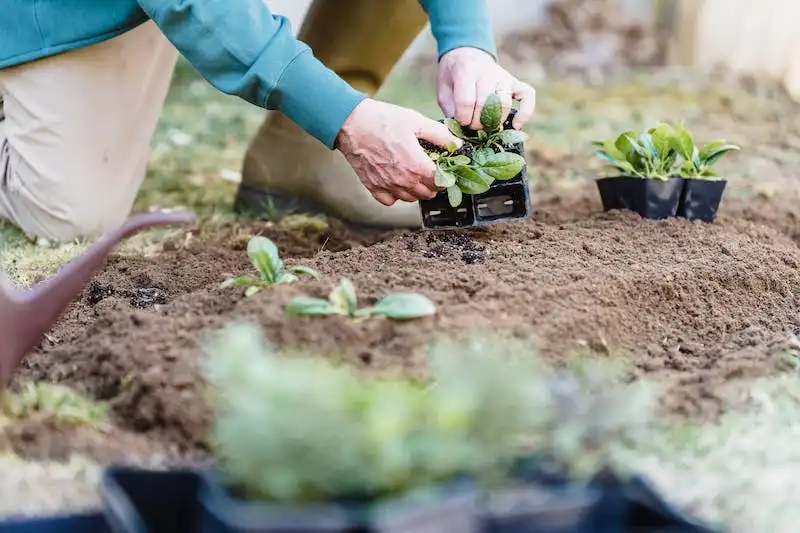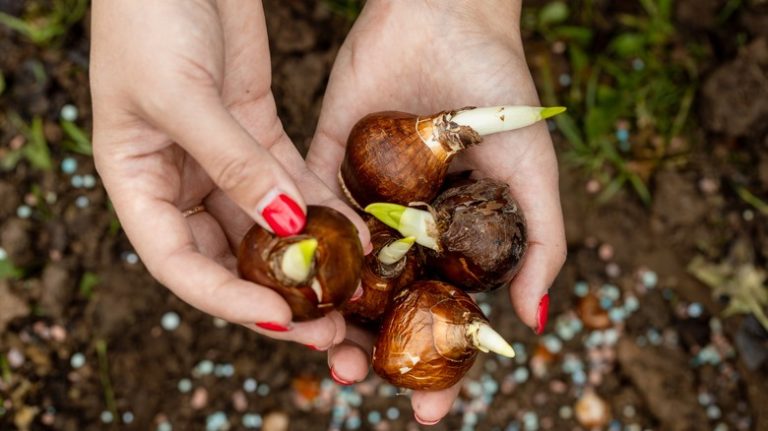Miniature roses are a popular choice for gardeners who want to add a touch of beauty to their outdoor space. These small and delicate flowers are sure to brighten up any garden or patio. They tend to be the easiest roses to care for, making them a great option for beginners. They come in a wide variety of colors and sizes, so there is sure to be a mini rose that will suit your taste.
Before planting your miniature roses, there are a few things you should know. First, make sure you choose the right location for your roses. They prefer full sun, so choose a sunny spot in your garden or patio. If you live in a hot climate, make sure to provide some shade during the hottest parts of the day to prevent the roses from drying out.
When planting the roses, be sure to prepare the soil properly. Miniature roses like well-draining soil, so consider adding some compost or peat moss to loosen up the soil. Dig a hole that is deep enough to accommodate the root ball of the plant. Make sure there are drainage holes in the bottom of the hole to allow excess water to escape.
Once your roses are planted, it’s important to water them thoroughly. Miniature roses need regular watering, especially during hot and dry periods. Check the soil moisture level by sticking your finger about an inch into the soil. If it feels dry, it’s time to water. Be careful not to overwater, as this can cause root rot and other fungal diseases.
Miniature roses also require regular feeding to keep them healthy and blooming. Use a balanced fertilizer formulated for roses and follow the instructions on the packaging. Fertilize your roses every four to six weeks during the growing season. Mulching around the base of the plants can help retain moisture and suppress weeds, so be sure to add a layer of mulch.
Caring for miniature roses is not much different from caring for full-sized roses. They require the same attention to watering, fertilizing, and pruning. However, there are some specific tips to keep in mind when it comes to minis. For example, they are more susceptible to diseases and pests, so be sure to keep an eye out for any signs of trouble. If you notice any yellowing leaves, holes in the leaves, or black spots, take action immediately.
If you live in a colder climate and want to enjoy your miniature roses year-round, you can consider growing them indoors. Miniature roses can be grown in containers and placed near a sunny window. Just make sure to provide enough light and proper care needed to keep them blooming.
In conclusion, miniature roses are a great addition to any garden or patio. With their wide variety of colors and sizes, there is sure to be a variety that suits your taste. Just make sure to choose the right location, prepare the soil properly, and provide regular care such as watering, fertilizing, and pruning. With the proper care, your miniature roses will bloom beautifully year after year.
Caring for Miniature Roses
Miniature roses are a beautiful addition to any garden, but they do require some care to keep them healthy and thriving. Here are some tips to help you care for your miniature roses:
Planting: When planting miniature roses, make sure you choose a location that gets plenty of sunlight. They prefer full sun but can tolerate some shade. Make sure the soil is well-drained and rich in organic matter.
Watering: Miniature roses need regular watering to keep their foliage looking fresh and prevent dryness. Water them deeply once a week, making sure the water reaches the root ball. Mulch around the base of the plant to help retain moisture.
Fertilizing: Use a fertilizer specially formulated for roses to provide them with the nutrients they need to grow. Feed them every four to six weeks during the growing season. Be sure to follow the instructions on the fertilizer package for best results.
Pruning: Pruning is an important part of caring for miniature roses. Remove any dead, damaged, or diseased branches to improve air circulation and prevent the spread of diseases. Prune them in early spring before new growth begins.
Pest and Disease Control: Miniature roses are more susceptible to certain pests and diseases than their full-sized counterparts. Keep an eye out for common rose pests, such as aphids and spider mites. Treat any infestations promptly to prevent damage to your plants.
Overwintering: In colder zones, miniature roses need protection to survive the winter. Before the first frost, stop fertilizing and reduce watering. Mulch around the base of the plants to insulate the roots. Consider bringing them indoors or covering them with burlap for added protection.
General Care: Miniature roses, like any other plant, also need general care including removing spent flowers, deadheading, and keeping the foliage clean and free from pest infestation. Regularly check for signs of stress or disease, and take action promptly if needed.
Indoor Care: If you choose to grow miniature roses as houseplants, place them in a bright spot with at least four to six hours of sunlight per day. Keep the soil evenly moist, but avoid overwatering. Use a well-draining potting mix specifically designed for indoor plants.
Toxicity: It’s important to note that while miniature roses are generally safe, they can be toxic to pets if ingested. If you have pets, make sure you keep your miniature roses out of their reach to avoid any potential issues.
Caring for miniature roses takes a little extra effort, but the rewards are well worth it. Follow these care instructions, and your miniature roses will bloom beautifully year after year!
Miniature Roses: Everything You Need To Know Before Planting
Miniature roses are a delightful addition to any garden or indoor space. These small, compact roses offer the beauty and fragrance of their larger counterparts in a smaller package. Before you begin growing these charming plants, there are a few things you should know to ensure their proper care.
First, it’s important to choose a spot where your miniature roses will thrive. They prefer full sun, so make sure to select a sunny location in your garden or choose a spot indoors where they can receive at least six hours of direct sunlight each day. If you’re planning to keep your miniature rose as a houseplant, place it in a sunny window.
When it comes to soil, miniature roses love well-draining soil. A mix of potting soil, peat moss, and perlite is an excellent choice. Make sure to plant your miniature rose in a container or pot with drainage holes to avoid waterlogged roots. If you’re planting them in the garden, amend the soil with compost to ensure good drainage.
Miniature roses are fairly low-maintenance, but they do require regular watering. Make sure to water deeply, allowing the soil to dry out slightly between waterings. Avoid overwatering, as this can lead to root rot. Minis tend to be more drought-tolerant than their larger counterparts, but it’s still important to keep an eye on their moisture levels.
Fertilizer is also essential for the health and blooming of your miniature roses. Use a balanced rose fertilizer and follow the instructions on the package. Apply the fertilizer every two to three weeks during the growing season, and reduce or stop fertilizing during the winter months.
Miniature roses are susceptible to pests such as aphids and spider mites. To keep these pests at bay, regularly inspect your plants for signs of infestation. If needed, use an insecticidal soap or a gentle homemade remedy to control the pests.
One important thing to note is that some miniature rose cultivars are toxic to pets, especially cats. If you have pets, make sure to choose non-toxic varieties to keep them safe.
Miniature roses can thrive in USDA hardiness zones 5-11. If you live in a colder zone, you can grow them as indoor plants and move them outdoors during the warmer months. Just make sure to gradually acclimate them to the outdoor conditions by exposing them to increasing amounts of sunlight and lower temperatures.
Lastly, pruning your miniature roses is necessary to maintain their shape and promote new growth. Use sharp and clean pruning shears to remove dead or damaged branches. Prune them in early spring before new growth begins, and prune lightly throughout the growing season to maintain their size and shape.
In conclusion, miniature roses are a wonderful addition to any garden or indoor space. With proper care and attention, these pint-sized blooms will reward you with a bountiful display of colorful flowers. So get your hands dirty and start planting your own mini rose garden! You won’t be disappointed.
Bonus tip: Miniature roses make excellent gifts and can be kept indoors as a houseplant. They are also perfect for small spaces such as balconies or windowsills.
How to use in garden
When it comes to using miniature roses in your garden, there are a few things to consider. These roses, like their larger counterparts, prefer well-drained soil and full sun. Before planting, be sure to prepare the soil by digging holes that are twice as wide and just as deep as the root ball of each rose plant. This will ensure that the roots have plenty of room to grow.
If you live in a colder zone, you may need to take extra care when planting your miniature roses. Some gardeners choose to keep their roses in pots and bring them indoors during the winter months. Others prefer to plant them directly in the ground but use a layer of mulch to protect them from the cold. Whatever method you choose, be sure to follow the instructions that come with your rose plants.
Miniature roses are sold in pots, and sometimes they are dormant when you purchase them. If this is the case, make sure to plant them as soon as possible after bringing them home. To plant, simply dig a hole and place the rose plant in the hole, making sure that the bud union is level with or slightly above the soil line. Then, backfill the hole with soil and water the plant thoroughly.
After planting, it’s important to keep a close eye on your roses to ensure they are growing and blooming properly. Miniature roses tend to be more demanding than their larger counterparts, so be prepared to give them a little extra care. This can include regular watering, fertilizing, and pruning to keep them looking their best.
You’ll also want to make sure that your roses are getting enough sunlight. Most miniature roses require at least six hours of direct sunlight each day in order to thrive. If your garden doesn’t receive enough sunlight, you may need to consider moving your roses to a sunnier spot or using a grow light to supplement their light requirements.
In addition to their stunning beauty, miniature roses can also be used as a feature in your garden. They are perfect for planting in the front of flower beds or alongside paths, where their compact size and abundant blooms can truly be appreciated. With their wide range of colors and sizes, there is a miniature rose to suit any garden design.
Whether you choose to plant them in the ground or keep them as a houseplant, miniature roses can add beauty and elegance to any garden. By following these tips and providing them with the proper care, you’ll be able to enjoy their stunning blooms for many years to come.
So, if you’re looking to add a touch of charm to your garden, consider incorporating miniature roses. These hardy plants are easy to care for and can make a big impact in even the smallest of spaces. With their vibrant colors and intoxicating fragrance, miniature roses are truly a gardeners’ favorite.




